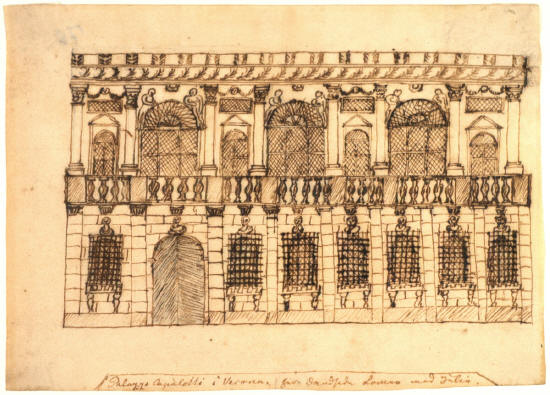Andersen wrote on this drawing, “Palazzo Capuletti in Verona. Here Romeo danced with ,uliet.” According to the diary the drawing was made on April 24, 1834. Kilde: Odense Bys Museer
Hans Christian Andersen began his tale ‘Godfather’s Picture Book’, published in 1868: ‘Godfather could tell stories; so many and such long ones. He could cut out pictures and he could draw pictures; and when it was near to Christmas, he would take out an exercise book with clean white pages, and on these he would paste up pictures taken from books and newspapers, and, if he had not enough for what he wanted to tell, he would draw them himself. I got several such pictures when I was little. ..’
Many people knew then that Godfather was Andersen himself. The children of families he visited were delighted with his paper cuts, which he used to make with his big scissors on the spot, and with the stories that he told from these wonderful paper fantasies. His youth had coincided with a period when the craze for silhouettes was still common. But his interest in and talent for making paper cuts he retained undiminished all his life. Andersen’s decorative imagination apparently springs straight out of old folk art, but there is also a streak of renewal in his artistry; a vitality, a glimpse of magic, which feels quite modern. His figures and patterns come miraculously to life, sustained not infrequently by an imagination, both grotesque and poetic, of exceptional range. In general, however, it is the warm sympathy, often found in his fairy tales and stories, that comes out in his silhouettes, his interest in the theatre in particular being reflected in this teeming gallery of figures.
